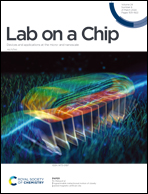Assessing bioartificial organ function: the 3P model framework and its validation†
Abstract
The rapid advancement in the fabrication and culture of in vitro organs has marked a new era in biomedical research. While strides have been made in creating structurally diverse bioartificial organs, such as the liver, which serves as the focal organ in our study, the field lacks a uniform approach for the predictive assessment of liver function. Our research bridges this gap with the introduction of a novel, machine-learning-based “3P model” framework. This model draws on a decade of experimental data across diverse culture platform studies, aiming to identify critical fabrication parameters affecting liver function, particularly in terms of albumin and urea secretion. Through meticulous statistical analysis, we evaluated the functional sustainability of the in vitro liver models. Despite the diversity of research methodologies and the consequent scarcity of standardized data, our regression model effectively captures the patterns observed in experimental findings. The insights gleaned from our study shed light on optimizing culture conditions and advance the evaluation of the functional maintenance capacity of bioartificial livers. This sets a precedent for future functional evaluations of bioartificial organs using machine learning.



 Please wait while we load your content...
Please wait while we load your content...